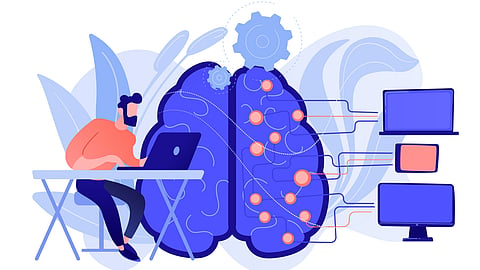Talking AI for publishers
Living in the pandemic has been an interesting experience for all kinds of businesses. In the digital publishing world, there has been an acceleration in the shift from print to digital. This explosion in audience behavior has changed user’s expectations of brands and their interactions with them.
The users no longer limit their expectations. User experience is at peak demand and publishers across the world are fighting to provide their users the best web experience they can offer.
This is where content meets technology. With the publishing industry shifting its base front to the digital world, it makes sense to invest in technology that’ll back you up. Deccan Chronicle, a popular English daily, stopped their print front entirely and is now operating digitally. These are the kinds of shifts that suggest the prominence and relevance of digital space in the future and more so at present.
As more users shift to the digital space and publishers gamble with technology and content to satisfy their user base, there has been a lot of progress in both these sectors. Technology is constantly becoming friendlier for publishers and content is getting better with a little help from multimedia.
How do publishers make use of technology ?
In digital publishing, content shouldn’t be treated as static. It can be reused over and over again with the right enhancements. But how do you use your content on your website?
1. Content
A website is a broad space where you can place content. Your users must be able to find the content with ease and get directed to similar content on your website to keep the retention rates high. Using collections of content helps you achieve this. As the web provides you limitless space to have your content, it is important to manage them so you can get the users to navigate around the website.
Using a cardified editor will further help you reuse pieces of content that have longevity. Structuring your content right will help you make suitable updates and additions in the future.
2. Auto-tag
News and content are getting very specific and targeted. Today, people want news that is of immediate importance to them.
Technology keeps track of the netizen’s demographic and location. With auto-tagging, you can ensure that all stories relevant to the area are displayed to the user - movie releases, shopping lists, political news, etc. Auto-tagging takes care of ensuring that the right stories are sent to the perfectly located audience.
3. Content personalization
As mentioned above, user experience is the priority for all publishers. As a user, you want content that is curated for you. This is precisely what google discover does,the AI algorithm curates a list of stories that are collected from different sources across the web and are displayed according to the user’s content preference. You can use the same logic within your website and provide users stories that they tend to read - leave it to AI to find related stories and push it to interested readers.
4. Auto-publishing
Gone are the days when editorial teams had a calendar view of their publication dates. With the right tools, publishers are able to schedule finished articles on any timeline they wish. The system ensures that the stories are pushed on all specified channels on the specific time leaving you free of the burden. This helps keep a steady stream of published articles flowing without having to assign human resources for the same.
5. Auto-posting on social channels
Having a system that allows you to manage your social media posts is very important and not a lot of publishers make use of the function. You can have all your handles synced with your software/CMS and regulate the posts individually.
You can also write social media post descriptions, push notification alerts and messages. In today’s age, you have to be available on every platform. Without the right support, you’d have to assign the role of sharing stories on every channel to a team but with progress in AI, a couple of clicks is all it takes.
6. Multimedia
Bring video, infographic and image all at your fingertips. Manage every element to your liking and embed without having to memorize codes. Link sites and embed codes without having to depend on a whole other software. Bring everything together and manage with ease.
7. Image focus
Details count and make all the difference. How do you ensure that all screens viewing your content get the best result? With the right AI support, you get to manage the display settings of all screens. Set image focus and users can get a unique and comfortable experience without any compromise whatsoever.
8. Contextual search
Contextual search is different from your traditional keyword-based search technology that only focuses on keywords and fetches results. The system focuses on the context as well as the intent of the user and then fetches the most relevant results. This would mean that based on the user, content of all kinds would get a fair chance.
9. Personalising content:
You should be able to detect any spam, fake news and any sort of ambiguity. AI can effectively help ensure that delete any unauthentic news or ambiguous data from being published. You can make use of fact-checkers and have content layered however you wish. This helps publishers stay authentic without compromising on the depth of their content.
Publishers spend an awful lot of time building their websites and maintain the content storm. While the fight for good content is inevitable, managing it doesn’t have to be. With AI, publishers can rely on precise management without having to assign tasks to their teams. The effort can be, instead, targeted towards building quality content. As technology leaps ahead, it is time publishers trust AI and make use of its perks.

